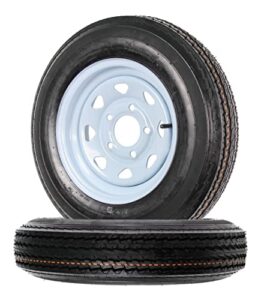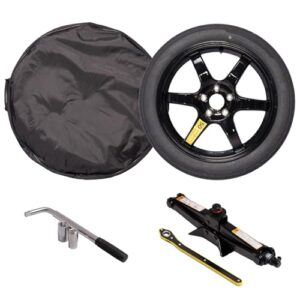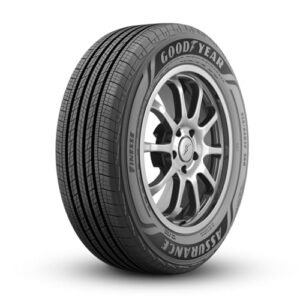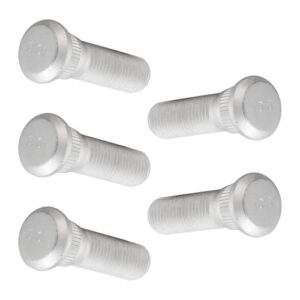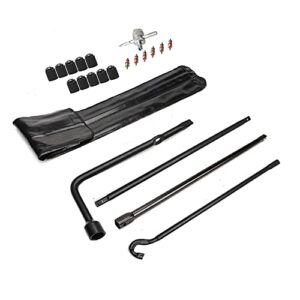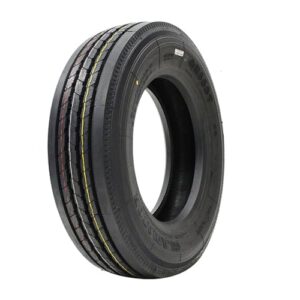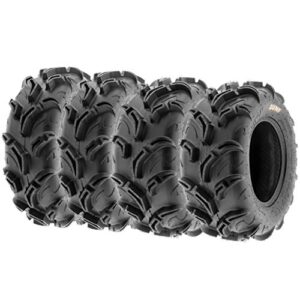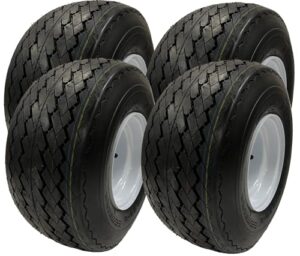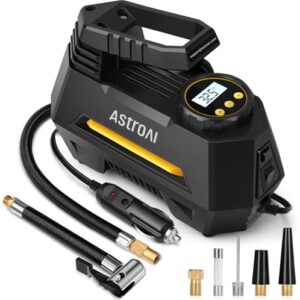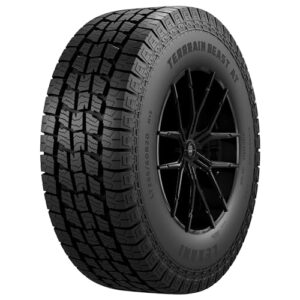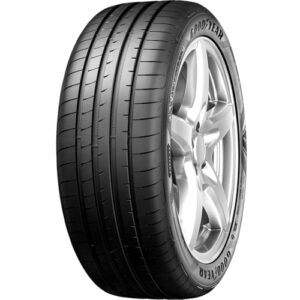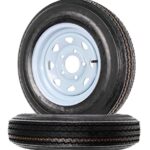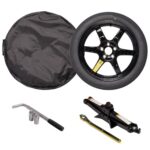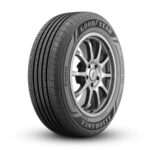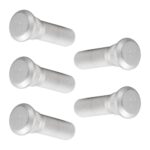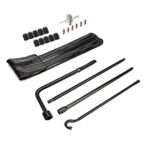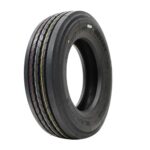Summer tires perform best in warm conditions, while winter tires excel in cold, icy, and snowy environments. The differences lie in rubber composition and tread patterns.
Summer tires use a harder rubber compound that offers excellent grip on dry and wet roads. They feature shallow tread depths, providing better stability and handling. Winter tires, on the other hand, use a softer rubber compound that remains flexible in freezing temperatures.
Their deep tread patterns and sipes increase traction on snow and ice. Choosing the right tire type ensures optimal performance, safety, and fuel efficiency. Investing in both types allows for seasonal rotation, extending tire life and enhancing driving experience. Understanding these differences helps in making informed decisions for vehicle maintenance.

Tire Composition Variations
Understanding the differences between summer and winter tires starts with their composition. Each tire type is designed to perform in specific conditions. This section will explore the key differences in tire composition.
Rubber Compounds In Heat And Cold
The rubber compounds in summer and winter tires are different. Summer tires have a harder rubber compound. This helps them perform better in hot conditions. The hard rubber keeps the tire from becoming too soft in the heat. On the other hand, winter tires use a softer rubber compound. This keeps them flexible in cold temperatures. Flexible tires grip the road better in snow and ice.
Tread Patterns And Depth
The tread patterns on summer and winter tires are also unique. Summer tires have fewer grooves and a streamlined pattern. This helps them provide better handling on dry and wet roads. The shallow tread depth helps maintain more contact with the road.
Winter tires have deeper treads and more grooves. These features help them dig into snow and ice. The deeper tread depth also helps in evacuating slush and water. This reduces the risk of hydroplaning.
| Feature | Summer Tires | Winter Tires |
|---|---|---|
| Rubber Compound | Harder | Softer |
| Tread Pattern | Streamlined | Deep and Grooved |
| Performance | Best in Heat | Best in Cold |
Performance On Different Terrains
Understanding the performance of summer and winter tires on different terrains is crucial. Both tire types are designed with specific conditions in mind. These differences impact how they handle various road surfaces. Let’s explore how each performs on dry roads and in snow and ice.
Grip And Handling On Dry Roads
Summer tires excel in dry conditions. They offer superior grip due to their unique rubber compounds. This design ensures better handling and stability during warm weather. The tread patterns are optimized for maximum contact with the road. This results in improved responsiveness and control.
Winter tires, in contrast, have a softer rubber composition. This makes them less effective on dry roads. Their tread design includes deeper grooves and sipes. These features are intended for snow and slush, not dry surfaces. Hence, they may feel less stable and more noisy on dry asphalt.
Traction In Snow And Ice
Winter tires are engineered for snowy and icy conditions. They feature deeper treads and more sipes. These characteristics improve traction on slippery surfaces. The rubber remains flexible even in freezing temperatures. This adaptability helps maintain grip and control.
Summer tires, on the other hand, harden in cold conditions. This results in reduced traction on snow and ice. Their shallow tread patterns are not designed for winter weather. This makes them prone to slipping and skidding in icy conditions.
| Tire Type | Dry Roads | Snow and Ice |
|---|---|---|
| Summer Tires | Excellent Grip | Poor Traction |
| Winter Tires | Less Stable | Superior Traction |
Choosing the right tire for the season is essential. It ensures safety and performance on different terrains.
Impact On Fuel Efficiency
Fuel efficiency is a critical factor for drivers. The type of tire you use can greatly impact your vehicle’s fuel consumption. Summer and winter tires have different characteristics. These differences can affect your car’s efficiency. Let’s explore the main factors impacting fuel efficiency.
Rolling Resistance Factors
Rolling resistance is a key factor in fuel efficiency. Summer tires have a lower rolling resistance. This means less energy is needed to keep them moving. Lower rolling resistance can improve fuel efficiency. Winter tires have higher rolling resistance. They are designed to grip icy and snowy roads.
- Summer Tires: Lower rolling resistance
- Winter Tires: Higher rolling resistance
Weight And Aerodynamics
The weight of a tire affects fuel efficiency. Summer tires are generally lighter. A lighter tire requires less energy to move. This improves fuel efficiency. Winter tires are heavier. They have more material to handle snow and ice.
Aerodynamics also play a role. Summer tires have a smoother surface. This reduces air drag. Less drag means better fuel efficiency. Winter tires have deeper treads. These treads increase air drag, reducing fuel efficiency.
- Summer Tires: Lighter, smoother, less air drag
- Winter Tires: Heavier, deeper treads, more air drag
Durability And Wear
The durability and wear of tires are crucial factors for vehicle owners. Tires must withstand different conditions and offer long-lasting performance. This section delves into the differences between summer and winter tires in terms of their durability and wear.
Longevity Across Seasons
Summer tires are designed for warm weather. They have a harder rubber compound. This makes them last longer in hot conditions. Winter tires use a softer rubber compound. This allows them to stay flexible in cold weather. But, this also means they wear out faster in warm temperatures.
| Tire Type | Rubber Hardness | Optimal Temperature | Longevity |
|---|---|---|---|
| Summer Tires | Hard | Above 45°F (7°C) | Longer in warm weather |
| Winter Tires | Soft | Below 45°F (7°C) | Shorter in warm weather |
Effects Of Temperature On Tire Aging
Temperature greatly affects tire aging and wear. Summer tires perform well in hot weather. Winter tires excel in cold weather. Using the wrong tire type can speed up wear and reduce longevity.
- Summer tires harden and crack in cold weather.
- Winter tires become too soft and wear quickly in hot weather.
To get the best performance and lifespan from your tires, use them in the right season. This ensures your tires are safe and long-lasting.
Safety And Legal Considerations
Choosing the right tires is crucial for safety and legality. Summer and winter tires have distinct features. Understanding these can help you make informed choices.
Braking Distance Variability
Braking distances differ significantly between summer and winter tires. Summer tires are designed for warm weather. They offer excellent grip on dry and wet roads.
In contrast, winter tires excel in cold conditions. They have better traction on snow and ice. This reduces stopping distances in wintery conditions.
Here’s a quick comparison:
| Condition | Summer Tires | Winter Tires |
|---|---|---|
| Dry Roads | Short braking distance | Longer braking distance |
| Wet Roads | Good grip | Moderate grip |
| Snow/Ice | Poor performance | Excellent performance |
Regional Tire Regulations
Regional regulations often dictate tire usage. Some areas require winter tires during cold months. These laws aim to improve road safety.
Check local laws before buying tires. Some regions impose fines for non-compliance. This ensures you stay safe and legal on the roads.
Here are some examples:
- Canada: Winter tires are mandatory in Quebec from December 1 to March 15.
- Germany: Winter tires are required during winter conditions, not specific dates.
- United States: Some states recommend, but do not mandate, winter tire usage.
Knowing these regulations can save you from fines and accidents. Always choose tires that meet your region’s requirements.
Frequently Asked Questions
Can Summer Tires Be Used In The Winter?
No, summer tires shouldn’t be used in winter. They lack grip on snow and ice, reducing safety. Use winter tires instead.
How To Tell The Difference Between Summer And Winter Tires?
Summer tires have shallow treads and harder rubber for better grip in warm weather. Winter tires have deeper treads and softer rubber for improved traction on snow and ice.
Can All-season Tires Be Used In Snow?
All-season tires can handle light snow but are not perfect for heavy snow or icy conditions. Winter tires perform better.
Can I Use All-weather Tires Year-round?
Yes, you can use all-weather tires year-round. They perform well in various conditions, including light snow and rain.
What Are Summer Tires?
Summer tires are designed for warm weather. They provide better grip and handling on dry and wet roads.
Conclusion
Choosing the right tires for each season is crucial for safety and performance. Summer tires offer better handling in warm weather. Winter tires provide superior grip on snow and ice. Always select tires based on your driving conditions and climate.
Proper tire selection ensures a smoother and safer driving experience year-round.




